About
The “Biomimetic Systems for Cell Engineering” group is a multidisciplinary research group focussing its research activities on the development and application of new artificial systems that mimic tissue micro and nanofeatures for biomimetic in vitro assays.
The use of more biomimetic and complex 3D models in in vitro assays is now a hot and extremely relevant topic.
“Flat biology” results are questioned when being transferred to in vivo, while the pressure to decrease animal testing continues increasing. As a group of engineering providers working in the biotechnological field, we see these issues as both a challenge and a clear opportunity to impact the field with novel technological solutions. Our research ambition will be to develop better engineering tools to help in the development of organotypic cell culture models, easy to implement in daily cell culture routines, so they have a real and meaningful impact in the biotechnological arena and, therefore, will impact applications in basic cell research, disease modelling and regenerative medicine.
Along with this line, we are working towards the following objectives: (i) to engineer and validate a complex in vitro model of small intestinal epithelium, (ii) to validate a novel in vitro model of engineered cardiac tissue and (iii) to engineer a novel vessel-on-chip to reproduce the tumor metastatic environment. To carry out our research we employ cutting edge biofabrication technologies such as bioprinting and novel biological tools such as organoids.

Staff
Projects
| INTERNATIONAL PROJECTS | FINANCER | PI |
|---|---|---|
| GUT3D-PLATE · Ready-to-use cell culture plates for gut 3D models (2020-2022) | European Commission, ERC-PoC | Elena Martínez |
| COMIET · Engineering Complex Intestinal Epithelial Tissue Models (2015-2022) | ERC Consolidator Grant | Elena Martínez |
| BRIGHTER · BIOPRINTING BY LIGHT-SHEET LITHOGRAPHY (2019-2023) | European Commission FET Open | Elena Martínez |
| PRIVATELY FUNDED PROJECTS | FINANCER | PI |
|---|---|---|
| PROMISE · BioPrinted hydROgel MicrofluIdicS to mimic patient-specific tumor mEtastatic microenvironment (2020-2023) | Obra Social La Caixa, Health Research Call for Proposals | Elena Martínez |
| FINISHED PROJECTS | FINANCER | PI |
|---|---|---|
| ENGUT · Engineered models of intestinal epithelial tissue: assessing in vivo-like functional properties (2019-2020) | Bist Ignite Program | Elena Martínez |
| INDUCT Dispositivo de multitejido intestinal para la monitorización de la comunicación entre epitelio y músculo en condiciones patológicas (2018-2020) | MINECO | Elena Martínez |
| COMIET Engineering Complex Intestinal Epithelial Tissue Models (2015-2020) | ERC Consolidator Grant | Elena Martínez |
| GLAM Glass-Laser Multiplexed Biosensor (2015-2019) | European Commission (H2020) – PHC-10-2015 | Elena Martínez |
| MINAHE5 (Bio)funcionalización de Micro- y NanoHerramientas en Suspensión para Aplicaciones en Células Vivas (2015-2017) | MINECO | Maria Lluïsa Pérez |
Publications
Equipment
Micro and nanofabrication techniques:
- Biomolecule gradients produced by microfluidics
- Large-area nanostructured polymer surfaces produced by diblock copolymers
- 3D microstructures on hydrogel materials
- Mini-bioreactor for 3D cell culture
Characterization techniques:
- Surface Plasmon Resonance (SPR) measurements on polymer materials
- Atomic Force Microscope (AFM) expertise
- Optical Microscopes (white light/epifluorescence)
- Focused Ion Beam (FIB) / Scanning Electron Microscopy (SEM) of biological specimens
Equipment:
- Biological safety cabinet (class II)
- High precision syringe pumps
- Peristaltic pumps
- Access to the Nanotechnology Platform (IBEC Core Facilities): equipment for hot embossing lithography, polymer processing and photolithography, chemical wet etching, e-beam evaporation and surface characterization (TOF-SIMS)
- Access to the Scientific and Technological Centers (University of Barcelona): equipment for surface analysis (XPS, AFM, XRD) and microscopy techniques (SEM, TEM, confocal)
- PRUSA i3MK3S (FDM printer)
- Phrozen Shuffle XL (DLP-SLA printer)
- SOLUS (DLP-SLA printer)
Collaborations
- Prof. Ángel Raya / Dr. Samuel Ojosnegros
Center of Regenerative Medicine in Barcelona (CMRB), Barcelona - Prof. Eduard Batlle
Institut de Recerca Biomédica (IRB), Barcelona - Prof. Pablo Loza
Institut de Ciències Fotòniques (ICFO), Castelldefels (Spain) - Dr. Javier Ramón, IBEC
- Dr. Elisabeth Engel, IBEC
- Prof. Raimon Jané, IBEC
- Prof. Josep Samitier, IBEC
- Prof. Javier Santos, Dra. Maria Vicario
VHIR, Barcelona (Spain) - Dr. Bruno Sarmento
i3S – Instituto de Investigação e Inovação em Saúde, Porto, Portugal - Dr. Sonia García-Blanco
University of Twente, Enschede (The Netherlands) - Dr. Fabio Variola
University of Ottawa (Canada) - Dr. Daniel Riveline
ISIS/IGBMC, Strasbourg (France) - Dr. Matthew Dalby
University of Glasgow (UK) - Prof. Jordi Martorell
Institut de Ciències Fotòniques (ICFO), Castelldefels (Spain) - Prof. José Antonio Plaza
CNM-CSIC, Barcelona - Dr. Francesc Mitjans
LEITAT, Barcelona - Francesco Pampaloni
Buchmann Institute for Molecular Life Sciences (Frankfurt) - Dra. Elena Élez
VHIO
News
3D mini-intestines to study bacterial infections
Researchers at IBEC have developed a 3D model of the human intestine that simulates the characteristics of the intestinal mucosa and its reliefs. These mini-intestines will make it possible to … Read more

Mini-intestinos en 3D para estudiar infecciones bacterianas
Investigadores del Instituto de Bioingeniería de Cataluña desarrollan un modelo de intestino humano en 3D que simula las características de la mucosa intestinal y su relieve. Este mini-intestino ha permitido recrear … Read more
Research assistant at the Biomimetic systems for cell engineering Research Group
Data límit: 20/06/2022Ref: RA_EM Biomimetic systems for cell engineering Group is looking for a for a Research Assistant. The contract will be within the framework of an ERC Proof-of-concept project (GUT3DPLATE), whose objective is the fabrication and validation of ready-to-use hydrogel in vitro models of tissue barriers using 3D bioprinting.
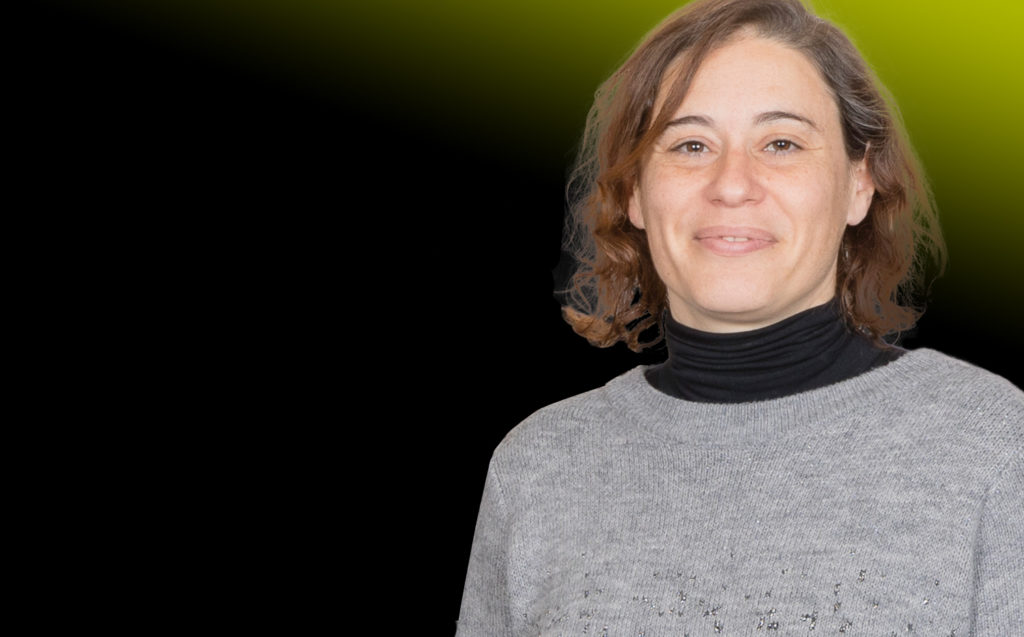
BRIGHTER on the radio
Elena Martínez, main researcher at IBEC, appears on radio 5, from RTVE, for her research on the creation of artificial skin that could be used to replace some animal experimentation methods.
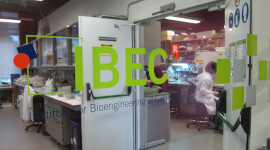
Researchers call for a change to the new law of science
Josep Samitier, director of IBEC and president of ACER, and the group leader of IBEC, Elena Martínez, appear in the media for the upcoming labor reform and future science law.
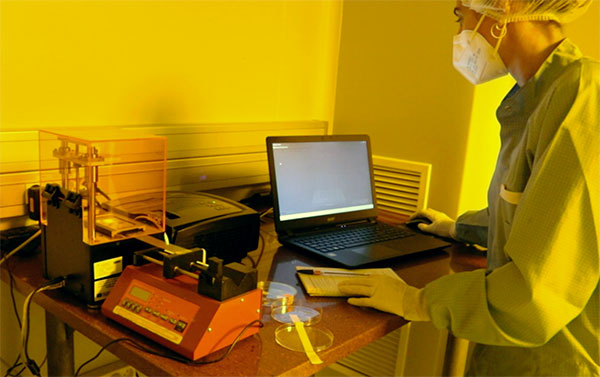
The european project BRIGHTER in the media
Researchers from the group of Biomimetic Systems for cell engineering of the Institute for Bioengineering of Catalonia, led by Elena Martínez, appear in the media for their innovative BRIGHTER project, which uses 3D bioprinting technology to create human tissues and thus avoid the use of animals.

Reducing animal testing with 3D Bioprinting: European project BRIGHTER brings new light
The European project BRIGHTER, coordinated by IBEC, is developing a new technology to produce functional human tissues as an alternative to animal experimentation in the field of biomedical research. This light-based 3D bioprinting technology fabricates tissues by patterning three-dimensional cell cultures. In the future, it could be even used to produce organs in the laboratory.

Nanomedicine against cancer brings together hundred experts
Nanomed, the Spanish nanomedicine platform coordinated by the Institute for Bioengineering of Catalonia (IBEC), organized with the Germans Trias i Pujol Institute (IGTP), the sixth edition of a conference designed to present the advances against cancer, from early diagnosis and controlled drug release, up to nanoparticle radiation therapy.
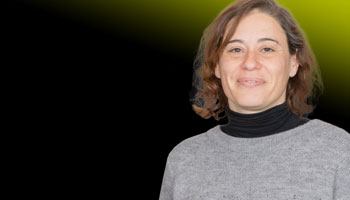
Does 3D bioprinting improve cancer survival?
Elena Martínez, group leader at IBEC and professor at the University of Barcelona (UB), is interviewed for the Big Vang section of La Vanguardia expaining her project to develop organs on a chip to improve the survival of patients with colorectal tumor metastases.
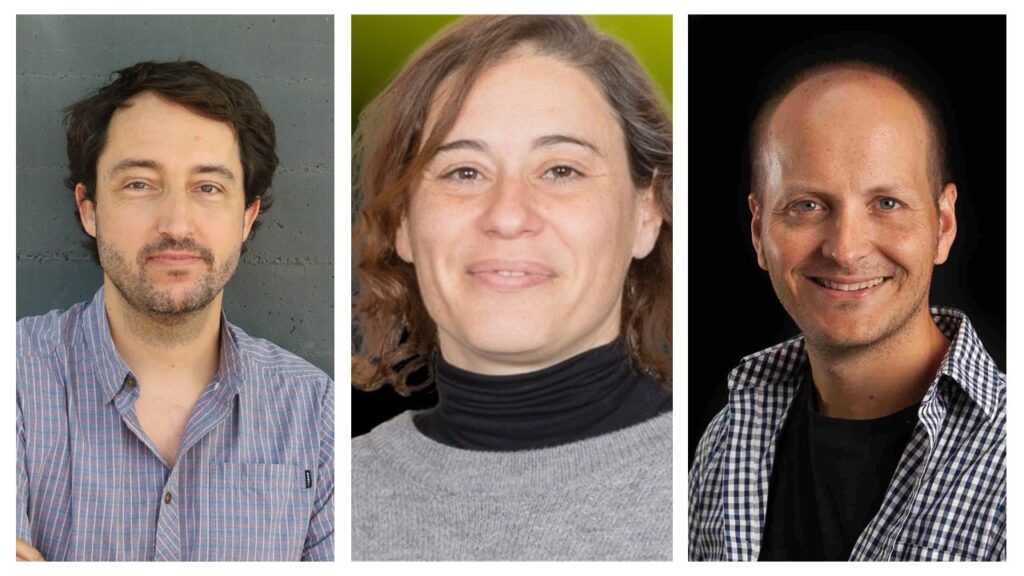
Bioengineering against cancer: IBEC researchers receive funding from La Caixa
IBEC researchers Elena Martínez, Xavier Trepat and Pere Roca-Cusachs aim to understand the processes that promote metastasis in colorectal cancer using innovative bioengineering tools, such as bioprinting and microscopy capable of revealing forces at the cellular level. The results will be translated into a device that will recreate the tumor environment from cancer cells derived from patients, as well as a new technology that will allow to visualize how physical forces affect the nuclei of metastatic cells.
Jobs
Postdoctoral researcher at the Biomimetic systems for cell engineering Research Group
Reference: PD-EM / Deadline: 20/01/2023
Research Assistant at the Research Group Biomimetic Systems for Cell Engineering
Introduction to the vacant position: The Biomimetic Systems for Cell Engineering Group is looking for a Senior Postdoctoral Researcher to work on the development and optimization of a new fabrication … Read more


 ibecbarcelona.eu
ibecbarcelona.eu